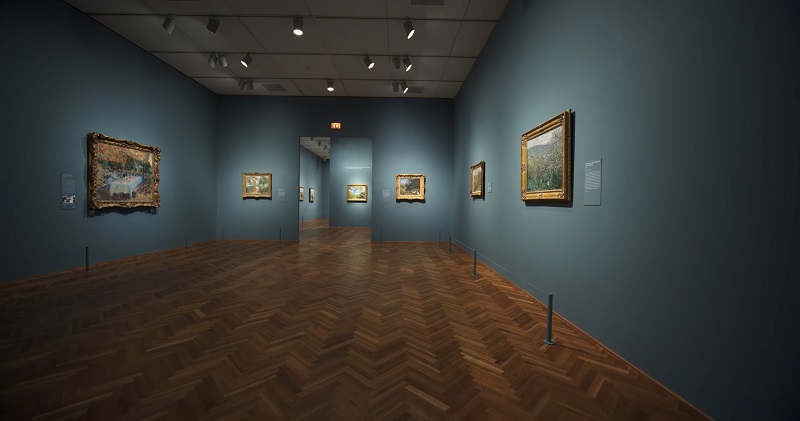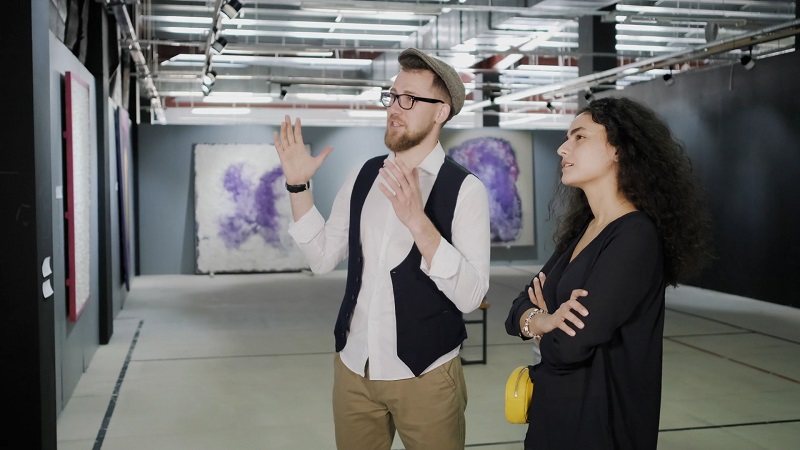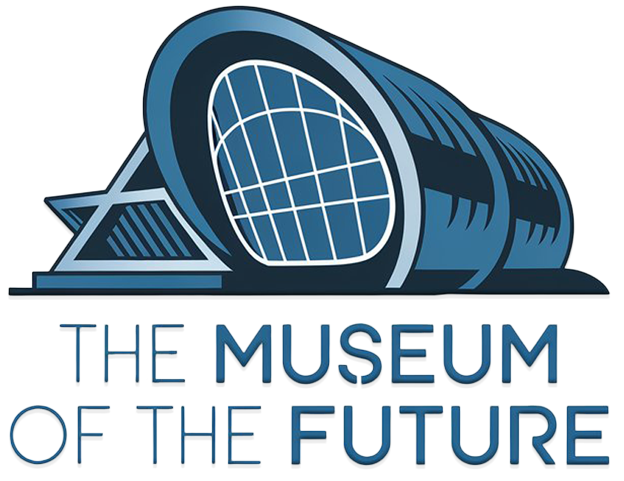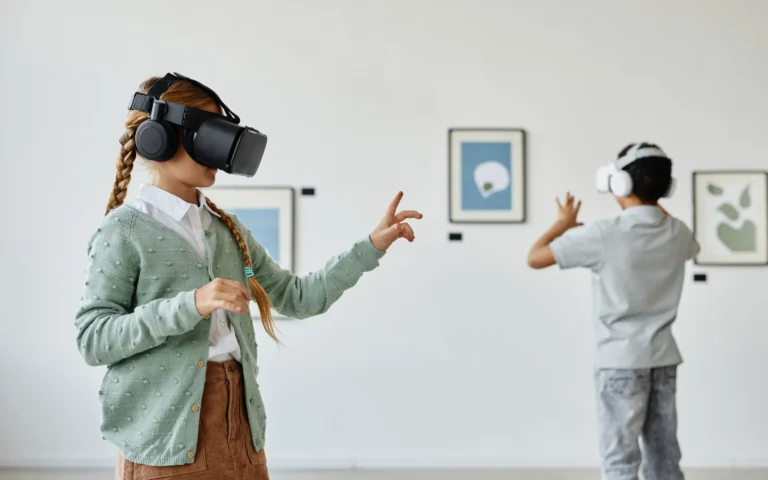Virtual museums have changed how people connect with culture, history, and art. Instead of traveling to a physical building, anyone can now explore collections, exhibits, and rare artifacts from home. This shift has opened doors to new ways of seeing the past and learning about different traditions.
Visitors do not need to stand in long lines or pay for admission. They can tour ancient ruins, enter recreated historical scenes, or walk through galleries once limited to elite institutions. Students can take part in interactive lessons. Families can explore museums together without leaving the living room.
Digital spaces continue to reshape how museums share knowledge. Some focus on global access. Others use technology to build emotion and wonder. The result is not only about screens and devices. It is about how people now see, feel, and learn through virtual culture.
This article explores that shift in detail with real examples, current technology, and what it means for the future of museums everywhere.
What Virtual Museums Offer Today
Virtual museums no longer serve as backup options for those who cannot travel. They offer unique cultural value on their own. Every virtual exhibit brings new levels of access, control, and engagement. People do not have to stare at static images anymore. They can walk through ancient temples, interact with objects, and explore rooms that might be closed to the public in real life.
The value lies not in copying physical museums but in offering what the physical world cannot. Some exhibits blend animation, audio, and layered interpretation. Others reconstruct lost heritage or offer behind-the-scenes looks at preservation.
A museum without walls can expand, adapt, and respond to cultural shifts with speed. Exhibits can go live during anniversaries, public events, or even crises. Updates do not take months. The audience becomes part of the experience, not a silent observer.
Full Access Beyond Time and Place
- Viewers can enter any exhibit any time of day, across time zones.
- The Louvre’s collections are open through virtual rooms with full navigation, not just photos.
- Visitors can pause, zoom, return later, or jump across centuries in seconds.
Control in the Hands of the Visitor
- People decide what to focus on. No need to follow a guide or fixed route.
- Some platforms offer theme filters, like “war,” “fashion,” or “portraits.”
- Children can use touch features. Adults can dive deep into expert notes.

Exhibits Built for Digital, Not Adapted
- The Canadian Museum of History’s “Legacy of Hope” was made first as a digital exhibit.
- Built with voice interviews, archival video, and animation.
- No physical version exists. Its format suits screens, not hallways.
Personalization and Language Tools
- Virtual museums now include multi-language support and audio descriptions.
- Visitors with visual or hearing limitations can explore without barriers.
- AI tools adjust recommendations based on interest, age, and region.
Technology Behind the Virtual Shift
What people see on the surface—the artwork, the gallery, the lighting—is only possible because of systems built to recreate, organize, and present knowledge in new ways. Each of these systems plays a different role. Together, they change how people access history.
Photogrammetry: Capturing Real Objects in Digital Form
Photogrammetry begins with stillness. A sculpture or artifact sits beneath controlled lighting while hundreds of high-resolution photographs are taken. Each image captures a new angle, a new surface. Software then converts all the data into a precise 3D model.
At the Vatican Museums, ancient busts scanned using photogrammetry reveal worn edges and tool marks invisible in person. A visitor can rotate the statue online, zoom in on faded detail, or inspect cracks that sit inches from the base. No velvet rope or glass display blocks the view.
Photogrammetry allows museums to show fragility without risk. It protects the object while giving full access to the viewer.
Virtual Reality: Stepping Inside the Cultural Story
Virtual reality creates space where nothing stands in the way—not crowds, not glass, not geography. Inside VR, a visitor becomes part of the scene. The Louvre used this to reconstruct the Mona Lisa’s environment across five centuries. Viewers step into Renaissance workshops, hear tools at work, and see the painting evolve with each glance.
Motion adds emotion. In France’s Musée d’Archéologie nationale, a full-body VR exhibit guides the viewer through Paleolithic caves. Torches flicker. Shadows move across walls. The viewer bends, steps, pauses. Time no longer feels distant. The museum does not explain the past. It places you inside it.
Augmented Reality: Expanding Objects into Everyday Spaces
Augmented reality places the past inside the present. It does not require full simulation. It adds digital layers to the real world. That opens doors for homes, schools, and mobile devices.
The Smithsonian’s AR app lets students project ancient fossils into their own classrooms. A dinosaur’s bones rise up beside a desk. A Roman coin floats above a kitchen counter. The Pergamon Museum uses similar technology to rebuild destroyed architecture. With a single device, broken columns rise. Color returns to faded walls. Visitors do not move, but the museum does.
Artificial Intelligence: The Hidden Engine of Interpretation
Artificial intelligence serves behind the curtain. It organizes, connects, and restores knowledge that would otherwise stay buried. At the British Museum, AI scanned uncategorized artifacts and grouped them by material, design, and pattern. It identified items long forgotten and placed them inside new collections.
Handwritten labels in Arabic, Turkish, and Latin were translated. Missing context was filled in. The result is not a feature on display. It is the foundation for every visitor’s journey.
AI also builds personalization. Some museum platforms now recommend exhibits based on age, language, interest, or past activity. Each user walks a different path through the same space.
Rebuilding Memory Through Virtual Museums
Virtual museums create new forms of memory. They allow people to revisit places that no longer exist, interact with historical figures, or experience global art without stepping into a building.
Hiroshima Peace Memorial Museum: Standing Inside a Lost Moment
The Hiroshima Peace Memorial Museum developed a virtual reality experience that lets viewers enter the streets of Hiroshima before and after the atomic bomb. This project was not built to entertain. It was built to teach.
Visitors wear a headset and find themselves in the center of a calm neighborhood on August 6, 1945. Children play. Vendors call out. Then, without warning, everything disappears. The ground shakes. The screen turns white. Debris fills the frame.
This digital moment lasts under five minutes, but it places people inside an event most have only seen in black-and-white textbooks. The museum developed the program with historical records, eyewitness interviews, and 3D modeling based on pre-war maps.
Mosul Museum Project: Digital Recovery After War
After ISIS forces destroyed much of the Mosul Museum in Iraq, local scholars and global archivists worked together to rebuild it—virtually. The result is the Mosul Museum Project, an open-access digital reconstruction supported by institutions such as Rekrei and the Iraqi State Board of Antiquities.
Every statue, tablet, and architectural piece was rebuilt using crowdsourced images taken by tourists before the destruction. Teams used photogrammetry and 3D modeling to restore rooms that no longer exist in physical form.
Visitors can now explore these spaces online. Labels include details in Arabic, English, and Kurdish. Pop-up information explains the history of the region, the damage caused by the war, and the global effort that brought the project to life.
National Museum of Australia: A Timed Digital Eruption
The National Museum of Australia created a unique digital installation that recreates the eruption of Mount Vesuvius. Unlike traditional documentary formats, this exhibit plays out in a virtual space every 15 minutes.
Visitors enter a darkened room or connect online through the museum’s digital platform. The floor begins to shake. Heat increases. Buildings collapse in real-time. Scenes are based on data from geologists, historical accounts, and 3D laser scans of Pompeii.
Digital flames rise. Sky turns red. And then silence falls again.
Norman Rockwell Museum: Free Virtual Field Trips for Classrooms
The Norman Rockwell Museum in Massachusetts launched an online platform that gives teachers and students free access to guided virtual tours. More than 250 pieces of artwork are available with voice narration, zoom features, and clickable details.
Each tour follows a theme—like civil rights, post-war American life, or journalism. Students can explore the background of each painting, listen to historical radio clips, and access primary sources.
The platform was built with educators in mind. Teachers can choose grade levels, download worksheets, or invite a museum educator to join a live session online. Every field trip is designed to fit inside a single class period, and there is no cost for public schools.
How Education Has Been Transformed
Some museums are not digital replicas. They are built as educational ecosystems. Students explore them without buses, permission slips, or entry fees. Teachers customize the pace. Researchers explore archives that used to be hidden in locked drawers.

| Museum / Platform | Educational Tools | Designed For | Access Type |
|---|---|---|---|
| Norman Rockwell Museum | Virtual field trips, guided narration, downloadable lessons | Classrooms (Grades 4–12) | Free registration |
| Smithsonian Learning Lab | Custom collections, teacher toolkits, student portfolios | Teachers & students | Open access |
| Google Arts & Culture | 3D tours, thematic galleries, art zoom, quizzes | General public & schools | Open access |
| Anne Frank House (Virtual Tour) | Interactive storytelling, timeline overlays, lesson plans | Middle & high school | Free |
| The British Museum | Curated journeys by era/topic, object-based learning | University-level & up | Free |
The Smithsonian Learning Lab lets teachers build digital collections from scratch. A teacher can select five African masks, two oral histories, and one dance clip—then group them into a thematic experience on cultural expression. Students submit responses through the same platform.
At the Anne Frank House, the virtual exhibit follows her diary in spatial form. The rooms grow smaller as her fear increases. Narration shifts tone. Light dims. This is not a slideshow. It’s an emotional timeline. Teachers use it to teach not only World War II history, but empathy, resistance, and memory.
Roblox and the British Museum: Meeting Audiences Where They Are
The British Museum joined Roblox to bring ancient artifacts into a space where millions of young users already spend time. The partnership included creating interactive mini-games and challenges tied to real historical periods.
Players unlock artifacts, decode myths, and walk through Egyptian tombs or Roman forums.
Emotional Impact Through Digital Spaces
Digital exhibits that carry emotional weight do not rely on visual detail alone. They rely on how information appears, how time moves, and how silence interrupts content. Some tell stories one pause at a time. Others let the viewer walk into the life of someone erased from history and listen to their voice speak again.
View this post on Instagram
The Interactive Frederick Douglass Hologram
The Museum of African American History in Boston launched a project that placed a life-sized hologram of Frederick Douglass into a digital exhibit. Viewers can speak questions. Douglass responds using his own words, pulled from letters, speeches, and autobiographical writings.
Remember Slavery: UN Exhibit with Layered Memory
The United Nations created an exhibit that does not show objects first. It opens with music—low, rising, repetitive. Then voices speak. Names appear on the screen. A sculpture made of rusted chains enters slowly.
The exhibit honors victims of the transatlantic slave trade. It includes first-person narratives, archival documents, and artwork created by descendants.
FAQs
Do virtual museums have admission fees?
Most virtual museums offer free access. Some charge small fees for premium content or advanced tools. The Louvre VR experience, for example, is free for basic viewing but offers a paid version with additional layers of commentary and high-resolution features.
Can I visit a virtual museum on my phone, or do I need a computer?
Most virtual museums work on both phones and computers. Some advanced features—like full 3D navigation or VR tools—only run smoothly on larger devices or desktops. Simpler platforms adjust to mobile screens, especially those built for schools or public access.
Are there any virtual museums made for children?
Yes. Some are designed entirely for younger users. The Natural History Museum of Utah has a “Kids’ Room” with games, fossil maps, and animal identification tools. The Rijksmuseum offers a version where paintings speak and ask questions. These tools do not oversimplify—they guide.
Do virtual museums ever close or expire?
Yes. Some exhibits are tied to grants, partnerships, or time-limited licenses. When the funding ends, the exhibit goes offline. That applies especially to collaborations with media platforms or touring exhibitions. Always check if there is an archive or contact form to request access after closure.
Last Words
Access used to depend on geography, budget, and permission. A museum visit meant standing in front of a case or a painting, surrounded by limits. That model excluded millions. Virtual museums broke it.
Now memory can live in a screen, not behind a ticket window. Reconstructed temples, destroyed archives, forbidden histories—each one enters classrooms, homes, and phones without needing to ask for space. Technology did not replace anything. It removed walls.
Virtual museums will never make physical ones irrelevant. They never needed to. What they offer is a shift in who gets to see, who gets to learn, and who gets to remember.

